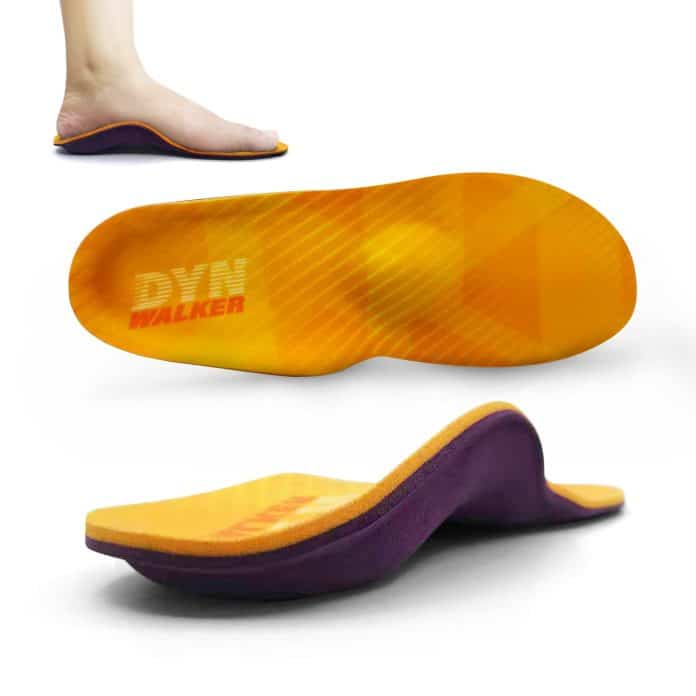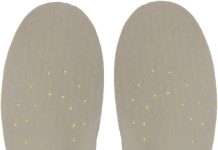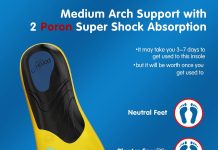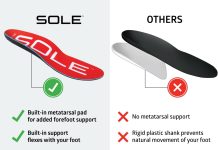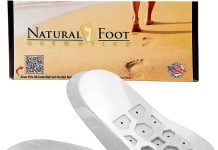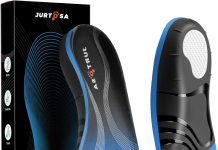If you’ve ever experienced metatarsalgia, you know how debilitating it can be. But the good news is that there may be a simple solution to help alleviate the pain – insoles. Whether you’re an avid runner or on your feet all day, slipping in insoles and bidding farewell to that nagging foot pain might sound like a dream come true.
But do insoles work? Can they genuinely provide the relief you’ve been longing for? In this article, we’ll explore whether insoles can help relieve metatarsalgia and discuss how they might make a difference in your life.
Understanding Metatarsalgia
Metatarsalgia is a common foot condition that causes pain and inflammation in the ball of the foot, specifically in the area between the toes and the arch of the foot.
It is often described as a burning or shooting pain, which can be exacerbated with activity or prolonged standing. This condition can significantly impact your daily activities and quality of life, but understanding its causes and symptoms is the first step towards finding relief.
What is metatarsalgia?
Metatarsalgia refers to the inflammation or irritation of the metatarsal bones, the long bones located in the front of the foot. These bones are crucial in weight-bearing and propulsion during walking and running.
When these bones are subjected to excessive pressure or trauma, it can lead to the development of metatarsalgia. This condition is commonly seen in athletes, individuals who participate in high-impact activities, wear ill-fitting shoes or have certain foot deformities.
Causes of metatarsalgia
Metatarsalgia can have various causes. One of the primary culprits is excessive pressure and stress on the metatarsal heads, which can result from running, jumping, or repetitive movements. Wearing shoes that lack proper support or have a narrow toe box can also contribute to the development of metatarsalgia.
Foot abnormalities, such as high arches or hammertoes, can increase the risk of experiencing metatarsalgia. Additionally, certain medical conditions, such as arthritis or Morton’s neuroma, may also be associated with this condition.
Symptoms of metatarsalgia
The symptoms of metatarsalgia often manifest as aching or burning pain in the ball of the foot. This pain may worsen with specific activities, particularly those that involve pushing off the toes, such as running or jumping. Some individuals may experience a numb or tingling sensation in the toes or a feeling of having a pebble in their shoe.
Swelling and inflammation may be present in the affected area, and discomfort may occur when walking or standing for long periods. If you experience any of these symptoms, it is essential to consult with a healthcare professional for an accurate diagnosis and appropriate treatment.
Diagnosing Metatarsalgia
When seeking a diagnosis for metatarsalgia, a healthcare professional will typically start by taking a detailed medical history and conducting a physical examination of the affected foot. During this assessment, they will inquire about your symptoms, past medical conditions, and any relevant activities or lifestyle factors.
The physical examination may involve palpating specific areas of the foot to determine the presence of tenderness or swelling. Additionally, your healthcare provider may evaluate your gait or the way you walk to identify any abnormalities or imbalances that may contribute to metatarsalgia.
Imaging tests
Sometimes, your healthcare provider may order imaging tests, such as X-rays or MRI scans, to obtain a more detailed view of the foot’s internal structures. These tests can help rule out other potential causes of your symptoms, such as stress fractures or joint abnormalities. Imaging can also provide valuable information about the alignment of the metatarsal bones and the presence of any underlying structural abnormalities that may require further treatment.
Gait analysis
A gait analysis is a specialized assessment that involves observing and analyzing your walking or running pattern. This evaluation can be done using various techniques, such as video recording or pressure measurements, to assess the distribution of forces on your feet. Gait analysis can provide valuable insights into any biomechanical issues or imbalances that may contribute to the development of metatarsalgia. By understanding how your foot functions during movement, healthcare professionals can make targeted treatment recommendations to alleviate your symptoms.
Treatment Approaches for Metatarsalgia
The treatment approach for metatarsalgia typically involves a combination of conservative measures and, in some cases, surgical interventions. The main goal of treatment is to reduce pain, alleviate inflammation, and restore normal foot function.
Conservative treatments
Conservative treatments are often the first line of defense against metatarsalgia. These non-invasive interventions aim to reduce symptoms and promote healing without surgery. Some common conservative treatments include rest and activity modification, which involve avoiding activities that exacerbate your symptoms and giving your foot time to heal. Applying ice packs to the affected area can help reduce inflammation and alleviate pain. Over-the-counter pain relievers or anti-inflammatory medications may be recommended to manage discomfort and inflammation.
Surgical interventions
In cases where conservative treatments fail to provide adequate relief, surgical interventions may be considered. Surgical options for metatarsalgia aim to address the underlying structural issues causing the condition. These procedures may involve realigning or removing a portion of the affected metatarsal bone, correcting deformities, or releasing tight ligaments or tendons. It is important to note that surgery is typically reserved for severe or persistent cases of metatarsalgia and should be discussed thoroughly with your healthcare provider.
Role of insoles
Insoles, orthotics, or shoe inserts play a significant role in managing metatarsalgia. They are often recommended as part of conservative treatment strategies and can provide additional support, cushioning, and alignment to the foot. Insoles work by redistributing pressure away from the metatarsal heads and encouraging proper foot mechanics, ultimately reducing pain and discomfort.
How Insoles Work
Understanding how insoles work is critical to maximizing their effectiveness in relieving metatarsalgia. Insoles come in various types, each designed to address specific foot issues and provide targeted support.
Types of insoles
There are several types of insoles available for individuals suffering from metatarsalgia. Cushioning insoles focus on providing extra padding and shock absorption, reducing pressure on the forefoot. They are often made from gel or foam and can be easily inserted into any shoe. Arch support insoles are designed to provide a higher level of support to the arches of the foot. These insoles help distribute weight evenly, alleviate pressure on the football, and promote proper foot alignment. Custom orthotics are specialized insoles custom-made to address individual foot abnormalities or imbalances. These are typically prescribed by healthcare professionals and made from molds or electronic scans of the patient’s feet.
Mechanism of action
Insoles work by modifying the biomechanics of the foot, redistributing forces, and improving overall foot alignment. Cushioning insoles provide a layer of padding between the foot and the ground, which absorbs shock and reduces the amount of pressure exerted on the metatarsal heads. Arch support insoles help stabilize the arches, preventing excessive flattening or collapsing of the foot during weight-bearing activities. By maintaining proper foot alignment, arch support insoles can alleviate strain and pressure on the forefoot. Custom orthotics are specifically tailored to address an individual’s unique foot structure and may incorporate a combination of cushioning and support to provide optimal relief.
Effect on foot alignment
Insoles can have a significant impact on foot alignment, which plays a crucial role in metatarsalgia management. Proper foot alignment ensures that weight is distributed evenly across the foot, reducing excessive pressure on specific areas, such as the metatarsal heads. By realigning the foot, insoles help correct any imbalances or abnormalities that may contribute to the development of metatarsalgia. This improved alignment not only reduces pain and discomfort but also promotes more efficient and biomechanically sound movement during activities.
Benefits of Using Insoles for Metatarsalgia
Using insoles for metatarsalgia can offer numerous benefits beyond pain relief. These benefits result from the various mechanisms of action provided by insoles.
Reduced pressure on the forefoot
One of the primary benefits of using insoles for metatarsalgia is the reduced pressure on the forefoot. Insoles, particularly cushioning or arch support varieties, help distribute weight evenly across the foot. By doing so, they alleviate excessive pressure on the metatarsal heads, reducing discomfort and preventing further inflammation or irritation. The pressure redistribution achieved through insoles allows for a more balanced weight-bearing pattern, reducing strain on the affected area.
Improved weight distribution
Insoles contribute to improved weight distribution throughout the foot, essential in managing metatarsalgia. By providing additional support to the arches and realigning the foot, insoles help ensure that weight is evenly distributed across the entire foot structure. This weight redistribution reduces the burden on the metatarsal heads, thus relieving pain and promoting healthy foot mechanics. By achieving improved weight distribution, insoles also help minimize the risk of developing additional foot conditions and complications from uneven weight bearing.
Shock absorption
The shock-absorbing properties of insoles play a crucial role in managing metatarsalgia. Cushioning insoles, in particular, are designed to absorb and dissipate the impact forces during walking, running, or other weight-bearing activities. By absorbing shock, these insoles prevent excessive pressure on the metatarsal heads, reducing pain and inflammation. The ability of insoles to provide shock absorption not only helps relieve acute symptoms but also contributes to the prevention of further damage or injury to the affected area.
Choosing the Right Insoles
Selecting the right insoles for metatarsalgia is essential to maximize their benefits and alleviate symptoms effectively. There are several key considerations to consider when choosing insoles for this condition.
Considerations for metatarsalgia
When selecting insoles for metatarsalgia, it is crucial to consider the specific needs associated with this condition. Look for insoles that provide ample support and cushioning in the forefoot area, as reducing pressure on the metatarsal heads is a primary goal. Additionally, consider insoles that offer arch support to promote proper foot alignment and stability. Insoles with shock-absorbing properties can also be beneficial, as they help mitigate the impact forces experienced during activities that may exacerbate metatarsalgia symptoms.
Arch support and cushioning
Arch support and cushioning are two crucial factors to consider when choosing insoles for metatarsalgia. Arch support helps distribute weight more evenly and reduces excessive strain on the forefoot. Insoles with cushioning properties provide an additional layer of protection and shock absorption, reducing pressure and impact on the metatarsal heads. By selecting insoles that offer both arch support and cushioning, you can effectively address the underlying issues contributing to metatarsalgia and alleviate symptoms.
Custom orthotics
In some cases, custom orthotics may be the most appropriate choice for individuals with metatarsalgia. Custom orthotics are tailored to an individual’s specific foot structure and can address any unique abnormalities or imbalances present.
These orthotics are typically prescribed by healthcare professionals, who may take molds or electronic scans of the feet to ensure a precise fit. Custom orthotics offer the advantage of being specifically designed to meet individual needs, providing optimal support, alignment, and cushioning.
The Importance of Proper Footwear
While insoles can provide significant relief for metatarsalgia, the importance of proper footwear should not be underestimated. Wearing appropriate shoes that fit well and offer adequate support is crucial to managing and preventing this condition.
Appropriate shoe fit
Ensuring that your shoes fit properly is vital in preventing and managing metatarsalgia. Ill-fitting shoes can increase pressure on the metatarsal heads and exacerbate symptoms. When selecting shoes, ensure they have a wide toe box to allow for proper toe movement and avoid shoes that are too tight or narrow in the forefoot area. It is also essential to choose shoes that fit snugly around the heel and provide adequate support throughout the arch.
Supportive features
Look for shoes with supportive features, such as cushioning in the forefoot and arch support. These features can help alleviate pressure on the metatarsal heads and promote proper foot alignment. Additionally, shoes with shock-absorbing soles can provide extra cushioning and reduce the impact forces experienced during walking or running.
Impact on Insole Effectiveness
Proper footwear plays a significant role in optimizing the effectiveness of insoles. Insoles work with shoes to provide continuous support, cushioning, and alignment to the foot. Ill-fitting or unsupportive shoes can hinder the benefits provided by insoles and limit their effectiveness in relieving metatarsalgia symptoms. Therefore, it is crucial to choose footwear compatible with insoles and provides an appropriate foundation for their function.
Insoles as a Complementary Treatment
Insoles can be a valuable part of a comprehensive treatment plan for metatarsalgia. However, it is essential to recognize that they work best when used with other treatment modalities.
Physical therapy exercises
Physical therapy exercises can help strengthen the muscles and improve the stability of the foot. These exercises specifically target the intrinsic foot muscles, which play a significant role in supporting the arches and maintaining proper foot alignment. Incorporating prescribed exercises into your treatment plan, alongside insoles, can enhance their effectiveness and contribute to long-term relief from metatarsalgia.
Stretching routines
Stretching routines focused on the calf muscles, Achilles tendon, and plantar fascia can help improve flexibility and reduce strain on the metatarsal heads. Stretching exercises may include calf stretches, toe stretches, and exercises using a rolling or tennis ball to massage the plantar fascia. These stretching routines complement insoles by addressing tightness and imbalances in the lower extremities, ultimately reducing pressure on the forefoot.
Lifestyle modifications
Making certain lifestyle modifications can also have a positive impact on metatarsalgia management. Avoiding activities that aggravate symptoms, such as high-impact sports or excessive standing, can help reduce stress on the metatarsal heads. Maintaining a healthy body weight can also alleviate strain on the feet and decrease the pressure exerted on the forefoot. By combining insoles with these lifestyle modifications, you can enhance the efficacy of your treatment plan and promote long-term relief from metatarsalgia.
Expert Recommendations
When considering using insoles for metatarsalgia, it is beneficial to seek insights from healthcare professionals with expertise in foot conditions. Podiatrists, who specialize in the diagnosis and treatment of foot and ankle disorders, offer valuable knowledge and guidance regarding the use of insoles for metatarsalgia. They can provide individualized recommendations based on your specific foot structure and symptoms.
Athletic trainers who work closely with athletes and individuals engaging in physical activities can also offer insights into the effectiveness of insoles in managing metatarsalgia in active individuals. Additionally, a trial and error approach, under the guidance of healthcare professionals, can help determine the most effective insole type and design for your unique needs.
Conclusion
Insoles can be a viable option for individuals seeking relief from metatarsalgia. They offer a non-invasive and conservative approach to reducing pain, improving foot alignment, and promoting healthy foot mechanics. By reducing pressure on the forefoot, improving weight distribution, and providing shock absorption, insoles can alleviate symptoms and enhance overall foot comfort.
When combined with appropriate footwear, physical therapy exercises, stretching routines, and lifestyle modifications, insoles can contribute to the long-term management of metatarsalgia. It is essential to consult with healthcare professionals, such as podiatrists or athletic trainers, to determine the most suitable insole type and develop an effective treatment plan tailored to your specific needs.
Remember, personal preference and effectiveness may vary, so a trial-and-error approach may be necessary to find the most beneficial insole for your metatarsalgia. With proper care, you can regain control over your foot health and enjoy a more comfortable, pain-free lifestyle.
PowerStep Insoles, Pinnacle Plus, Ball Of Foot Pain Relief Insole, Metatarsalgia Arch Support Orthotic For Women and Men, M10/W12
Trustfeet Heavy Duty Support Metatarsal Pain Relief Insoles for Metatarsalgia,Morton's Neuroma,Ball of Foot Pain Relief,Plantar Fasciitis,Arch Support Orthotics Shoe Inserts for Man Women-C
Orthotics Arch Support Metatarsalgia Insoles - Mortons Neuroma Inserts Relief Ball of Foot Pain - Orthopedic Insoles for Flat Feet - Shoe Inserts for Plantar Fasciitis (Red L)
Emsold Ultra Thin Orthotic with Metatarsal Pad and Deep Heel Cup – Semi-Rigid Arch Support Insole for Men and Women – Relieves Pain from Plantar Fasciitis, Morton’s Neuroma and Metatarsalgia
Dr. Foot's Arch Support Insoles, Help Against Plantar Fasciitis, Metatarsal and Heel Pain, Diabetic Anti-Sweat Foam Comfortable Insoles for Shock Absorption(M | 5~9 US Women's, Black)
ZenToes Metatarsal Pads for Men and Women - Ball of Foot Pain Relief Cushions for Sesamoiditis, Metatarsalgia, Morton's Neuroma - 2 Pairs Fabric Sleeves with Gel Inserts (Medium, Black)
$14.99 in stock

